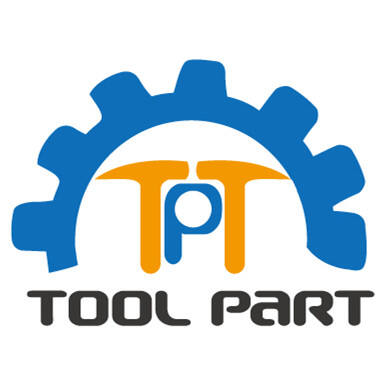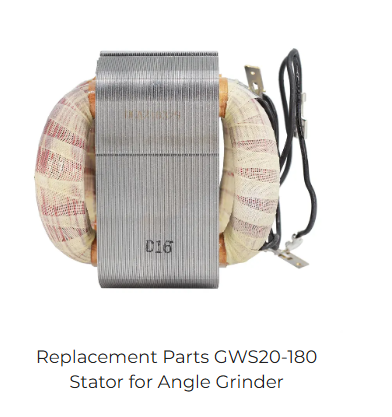Overheating and Thermal Degradation in Stator Windings
How Excess Heat Accelerates Insulation Breakdown
When stator windings get too hot, it causes problems with the insulation materials they're wrapped in, and this really affects how well they work and how long they last. Research shows something interesting about temperature changes too. If the temperature goes up by around 10 degrees Celsius, the life span of those insulations basically gets cut in half. Materials used for insulation, think polyester or epoxy resins, all have maximum temperatures they can handle. Go beyond those thresholds and what happens? Micro cracks start forming until eventually the whole insulation system fails. Getting to grips with why heat builds up matters a lot. Sometimes it's because there's just too much load on the system, other times bad electrical connections are to blame. Once we figure out what's causing the heat issues, smart solutions can be developed to stop things from getting too warm and make sure those stators keep running properly for years instead of months.
Cooling System Optimization Techniques
Cooling systems like water or oil based ones make a big difference for stators when it comes to how well they perform over time. When temps stay low during operation, there's less chance of overheating which wears down insulation faster than normal. Keeping these cooling systems properly maintained means they work better most of the time, so unplanned shutdowns don't happen as often and insulation problems get avoided. Thermal imaging tech is another good tool for finding those pesky hot spots before they become major issues. Many facilities have started incorporating this kind of monitoring into their regular checks because catching problems early really helps keep everything running smoothly without surprises later on.
Monitoring Temperature for Early Warning Signs
Keeping track of temperatures through sensors gives warning signs long before insulation fails completely, which makes systems much more reliable overall. Setting temperature limits depends on what kind of stator we're dealing with and how it was built. Once those limits are set, technicians know when something needs attention right away. Pairing these sensor readings with proper data analysis lets maintenance teams create schedules that catch problems early on. For instance, if heat builds up in certain areas repeatedly, workers can check those spots specifically instead of waiting for breakdowns. Safety gets better obviously, but running costs go down too because equipment doesn't break as often or need emergency repairs.
Stator Insulation Failure Prevention Strategies
Impact of Varnish Baking and Contamination
The baking process for varnish makes a big difference when it comes to how well insulation sticks to surfaces and cuts down on dirt and grime that might mess up insulation performance while things are running. When insulation stays put better, the stator lasts longer before breaking down, which matters a lot since many systems just fall apart fast if they're not kept up properly. Studies have looked into this stuff and found that dirty conditions really do raise failure rates significantly. One report even mentioned failure rates jumping as high as 30% in setups where nobody bothered with regular cleaning routines. For manufacturers wanting their products to work right from day one, keeping components clean during production isn't optional anymore. Just cutting back on contamination levels alone can transform how reliable these motors actually are over time.
Material Selection for Thermal Endurance
Choosing materials that can handle heat stress makes all the difference when it comes to how long stator parts last. Epoxy materials of good quality stand out because they resist thermal fatigue much better than other options, which helps manage heat and keeps things insulated properly. These epoxies don't just survive higher temps they actually make the whole stator work better too. Research shows these premium materials can push temperature limits quite a bit further maybe around 20% higher in some cases. That means components stay strong even when conditions change from day to day, making them more dependable overall while cutting down on those annoying insulation failures that cost time and money to fix.
Routine Insulation Resistance Testing
Regular insulation resistance testing helps catch problems early before they turn into major breakdowns. When we run these tests on a consistent basis, it creates a solid maintenance plan that reduces the chances of dealing with unpredictable changes in insulation resistance over time. Monitoring this resistance regularly lets technicians figure out what counts as normal for different equipment setups, making it easier to spot when something needs fixing before it causes real trouble. Beyond just preventing failures, keeping up with these tests actually makes systems more reliable day after day. Plus, it helps keep stators running at their best for longer periods, so companies don't have to replace parts as often because of unexpected wear and tear.

Addressing Voltage Imbalance Issues
Circulating Currents from Phase Inequality
Uneven voltage distribution often results in circulating currents that really boost the chances of overheating problems and early breakdowns in stator windings. The situation gets worse when various parts of the power supply aren't balanced properly because this creates extra strain on insulation materials throughout the system, sometimes causing complete failures down the road. Finding out what's actually causing these imbalances matters a lot for fixing things right. Common culprits include things like unbalanced loads across circuits or issues with transformers themselves. Industry data shows that when voltages aren't matched correctly, energy losses can jump as much as 10 percent, putting serious pressure on entire electrical systems over time.
Phase Balancing Through Electrical Adjustments
Phase balancing methods including adjustments to transformer taps really work wonders for spreading out electrical loads across all three phases. When we get those loads balanced properly, it cuts down on problems caused by uneven voltages throughout the system. Balanced loading keeps things running smoothly and actually makes equipment last longer before needing replacement or repair. Keeping track of current levels along with voltage readings becomes pretty important too. These measurements tell us exactly what's going on so technicians can jump in and fix issues right away if something starts looking off balance. Smart grid tech has made a big difference here lately though. With these systems in place, operators can spot phase imbalances almost instantly and tweak settings without waiting for scheduled maintenance windows, which means better overall efficiency and fewer unexpected shutdowns.
Implementing Voltage Stabilization Devices
Voltage stabilizers help combat power surges and dips, keeping equipment running smoothly while protecting stator insulation from wear and tear over time. These devices regulate incoming voltage levels so they don't put too much strain on electrical components. When selecting a stabilizer, matching it to what the system actually needs matters a lot for getting good results. Field tests indicate these units cut down on insulation failures by around 40% in industrial settings. That makes them pretty essential for anyone wanting reliable operations day after day without unexpected downtime costs.
Mechanical and Contamination-Related Failures
Vibration Damage from Loose Core Laminations
When core laminations become loose, they create serious vibration problems that put mechanical stress on magnetic circuits and frequently lead to expensive equipment failures. Checking for lamination problems during routine maintenance is essential because small issues tend to grow into major headaches if left unchecked. Industry studies indicate that machines suffering from vibration problems typically see maintenance expenses jump around 20% higher than normal, which really highlights why catching these problems early matters so much. Fixing lamination issues right away keeps operations running smoothly while extending how long machinery lasts. Machines that aren't properly maintained this way end up breaking down at inconvenient times, causing production delays and additional repair bills.
Oil/Dust Intrusion Mitigation Tactics
When oil and dust get into electrical systems, they really mess things up, but there are ways to combat this problem effectively. Putting in place things like filters and proper sealing helps keep those pesky particles out of critical components where they cause trouble. Regular cleaning and maintenance also plays a big role in keeping protection systems working right. Studies show that when companies stick to good preventive practices, they cut down on failures related to contamination by over 40%. That kind of reduction speaks volumes about how important it is to maintain clean operating conditions for long term reliability and efficiency across all sorts of equipment setups.
Bonding Resins for Stack Integrity
Good quality bonding resins are essential for keeping stacks intact and able to withstand temperature changes and physical stress while they're working. When picking out the right kind of bonding material based on where it will be used, this decision often makes all the difference in how long parts last before needing replacement. Studies show that when bonding isn't done properly, problems with stack stability start showing up after just a few months in tough industrial settings like chemical plants or outdoor equipment exposed to extreme weather. Getting the materials selection right means better day to day performance and fewer unexpected breakdowns down the road. Manufacturers who take time to understand these requirements typically see much better results over the lifetime of their products.
Moisture Ingress and Corrosion Prevention
IP-Rated Housing Specifications
Adding IP rated housing provides good protection against water getting inside, which makes stator units last longer and work more reliably over time. Getting familiar with how IP ratings work matters when picking out the right kind of casing for different environments. These enclosures cut down on failures caused by moisture entering the system something that many industry reports back up. When we install these kinds of housings, they act like shields for the stator components against all sorts of weather conditions. This means better overall performance and fewer trips out to fix problems related to dampness messing things up. Most maintenance teams will tell us this saves money in the long run too.
Space Heater Integration During Downtime
Using space heaters when equipment isn't running helps keep things at the right temperature and stops condensation problems from building up. The idea is basically figuring out how long machines sit idle before deciding what kind of heating makes sense for each situation. Smart use of these heaters cuts down on corrosion issues by around 30% or so according to industry data, which means parts last longer and work better over time. Taking this step ahead of time protects those stator cores from getting damaged by moisture, something that happens all too often in facilities where humidity control gets overlooked during maintenance periods.
Humidity Control Best Practices
Humidity control remains essential when trying to cut down on corrosion problems within stator operations. Keeping things at just the right moisture level makes sure the insulation stays reliable while boosting how well the whole system works. Research indicates that proper humidity management can actually extend insulation lifespan by over a quarter, which means big improvements in how efficiently electrical systems run day after day. When companies stick to good humidity control practices, they get double benefits both fighting off corrosion damage and getting better performance from their stator units across all sorts of working conditions.
Frequently Asked Questions (FAQ)
What causes overheating in stator windings?
Overheating in stator windings is primarily caused by excessive loads, poor electrical connections, and inadequate cooling systems. Monitoring temperature and implementing efficient cooling strategies can help mitigate these issues.
How can stator insulation failure be prevented?
Stator insulation failure can be prevented through regular maintenance, monitoring temperature levels, using appropriate thermal-resistant materials, and conducting routine insulation resistance tests.
What is the impact of voltage imbalance on stator units?
Voltage imbalance can lead to circulating currents, increasing the risk of overheating and potential failure of stator windings. Maintaining balance through electrical adjustments and monitoring is essential for system efficiency.

